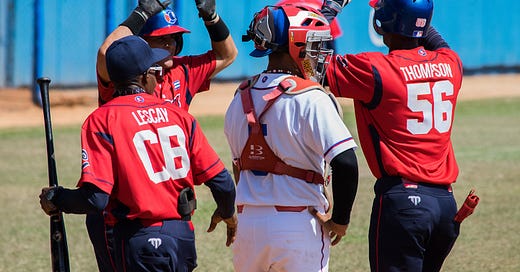I think that the surprise edition of “The Never Seen” in the Cuban National Series was quite easy to notice at the end of this Tuesday's games: there were a lot of runs everywhere, with the exception of the duel in which Guantánamo won 5-4 to Holguin. Before we got to the final count of the day, I was thinking about how out of proportion everything has …
© 2025 Yirsandy Rodríguez
Substack es el hogar de la gran cultura



